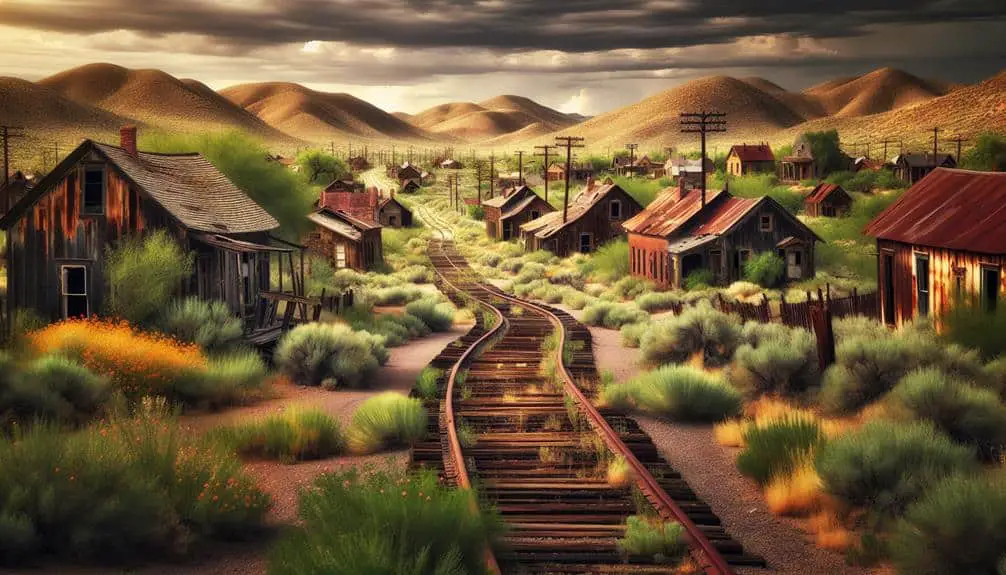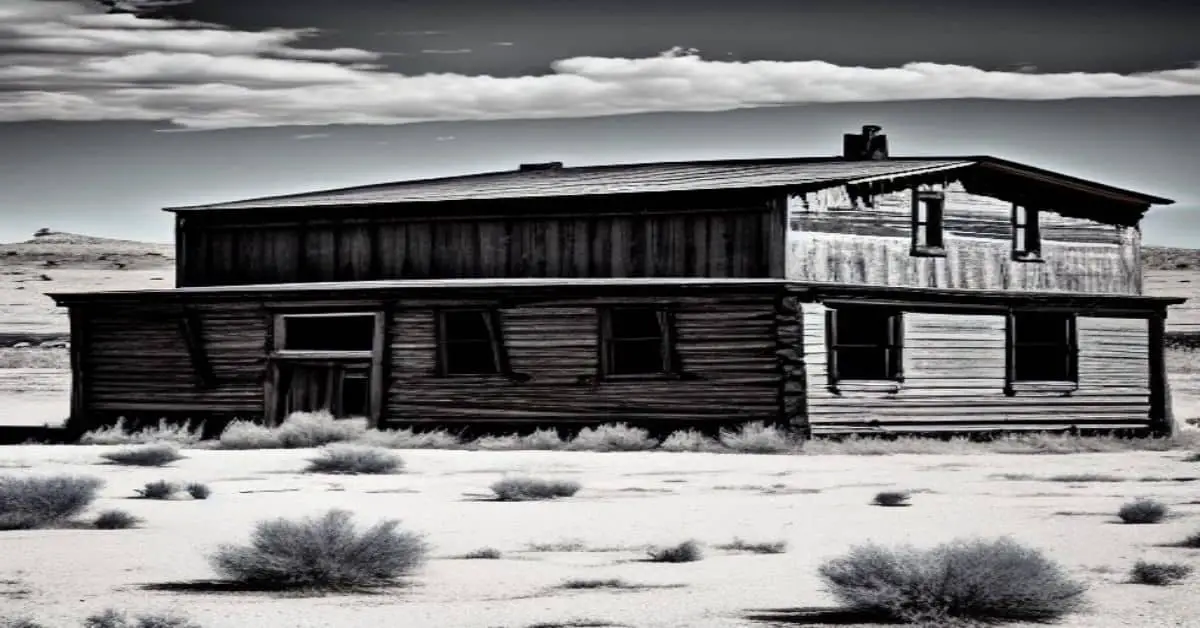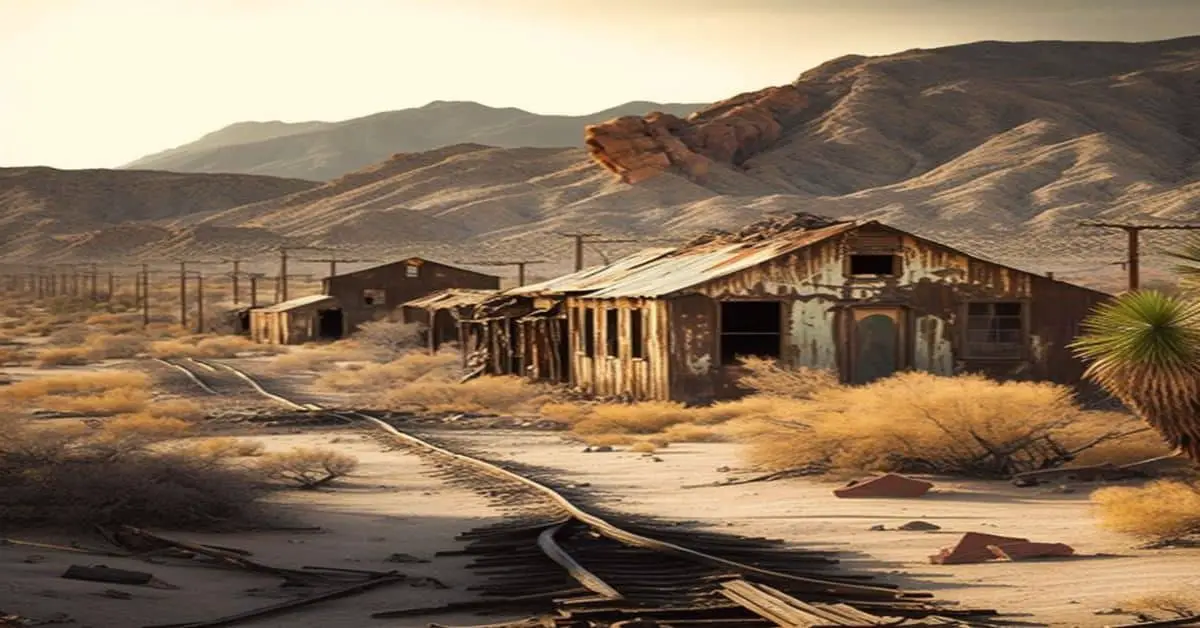Old railroad worker towns in Arizona thrived initially, offering employment. However, technological advancements led to reduced demand for workers, mirroring a national trend. The shift to diesel engines impacted stability and prosperity, decreasing labor needs. This, coupled with urbanization and economic dynamics, caused abandonment. Preservation efforts now focus on safeguarding historical significance, showcasing a balance between honoring the past and progress. Future prospects hint at a potential resurgence, with revitalization projects preserving unique heritage and transforming ghost towns into sustainable economic hubs. The transformation of these communities highlights industrial evolution shaping destinies.
Key Points
- Rise and fall mirrored national trends in the railroad industry.
- Shift to diesel engines decreased labor demand and impacted stability.
- Abandonment due to urbanization, economic dynamics, and modernization.
- Preservation efforts focus on historical significance and economic revitalization.
- Potential resurgence through revitalization projects and cultural tourism initiatives.
Rise and Fall of Railroad Communities
During the late 19th and early 20th centuries, railroad communities in Arizona experienced rapid growth followed by a gradual decline as the railroad industry evolved. The industrial revolution played a significant role in shaping the fate of these towns. Initially, railroad communities flourished as hubs of activity, with workers flocking to these areas in search of employment opportunities provided by the booming industry. However, as technological advancements and changes in transportation methods occurred, such as the shift from steam to diesel engines, the demand for railroad workers decreased, leading to a decline in these once-thriving communities.
The decline of railroad communities in Arizona mirrored the broader changes happening in the railroad industry nationwide. As companies modernized and streamlined operations, many railroad jobs were eliminated, impacting the stability and prosperity of these towns. The industrial revolution brought about a transformation in the way goods were transported, ultimately reshaping the landscape of railroad communities in Arizona and marking the end of an era characterized by rapid expansion and subsequent decline.
Impact of Changing Transportation
The evolution of transportation methods, notably the shift from steam to diesel engines, profoundly impacted the stability and prosperity of railroad communities in Arizona during the late 19th and early 20th centuries. As diesel engines replaced the traditional steam locomotives, economic shifts occurred within these towns. The efficiency and speed of diesel engines led to a decrease in the demand for labor, causing layoffs and migration of workers to seek employment elsewhere. This shift also contributed to urbanization trends as residents moved to larger cities in search of new opportunities.
Moreover, the changing transportation landscape affected the cultural heritage of these communities. With the decline of the railroad industry, many historical sites and landmarks associated with the railroad worker towns faced neglect and deterioration. However, this transformation also opened up new avenues for tourism opportunities. Efforts to preserve and showcase the history of these towns have led to an increase in cultural tourism, attracting visitors interested in experiencing the heritage and legacy of the old railroad worker communities in Arizona.
Abandonment and Desertion Trends
As transportation technologies advanced and economic landscapes shifted, the trend of abandonment and desertion became increasingly prevalent among the old railroad worker towns in Arizona. Due to the decline in the need for railroad workers, many of these towns experienced a significant population decrease as residents migrated to urban areas in search of new economic opportunities. The once bustling towns that thrived on the presence of the railroad industry faced challenges as economic shifts led to the closure of rail lines and depots, further contributing to their decline.
The impact of urban development also played a pivotal role in the abandonment of these towns. As cities expanded and modernized, the old railroad worker towns were often left behind, unable to compete with the amenities and job prospects available in larger urban centers. This shift in economic dynamics forced many residents to leave their homes in search of better prospects, ultimately leading to the desertion of these once vibrant communities.
Preservation Efforts in Arizona
With the decline of old railroad worker towns in Arizona, efforts to safeguard their historical significance have gained momentum in recent years. Historic preservation has become a focal point for many communities looking to revitalize their heritage and attract visitors interested in the rich history of these towns.
Organizations dedicated to preserving the architectural integrity of these settlements have been actively working to restore and maintain key buildings and landmarks. Through initiatives aimed at documenting the stories of past residents and the significance of these towns in the development of Arizona, a renewed sense of community revitalization is taking place.
Local governments, nonprofits, and passionate individuals have joined forces to guarantee that these old railroad worker towns aren't forgotten. By promoting tourism centered around the unique charm of these historic sites, economic opportunities are being created, breathing new life into once-abandoned areas. The preservation efforts in Arizona serve as a beacon of hope for the future, showcasing the importance of honoring the past while embracing progress.
Future Prospects for Ghost Towns
Future prospects for ghost towns in Arizona point towards a potential resurgence in economic viability and historical significance through strategic revitalization efforts. With the rise of revitalization projects aimed at preserving the unique heritage of these towns, there's a growing recognition of the economic opportunities they present. Ghost towns have the potential to become cultural and historical landmarks, attracting tourists and history enthusiasts alike.
By investing in infrastructure improvements, historical preservation, and tourism initiatives, these towns can be transformed into sustainable economic hubs. For example, converting old buildings into museums, galleries, or boutique shops can breathe new life into these deserted areas. Additionally, promoting events that celebrate the town's history, such as festivals or reenactments, can draw in visitors and boost local businesses.
Furthermore, the allure of experiencing a piece of the past firsthand can create opportunities for educational tourism and unique travel experiences. As these revitalization efforts continue to gain momentum, ghost towns in Arizona have the potential to evolve into thriving destinations that honor their past while embracing the future.
Frequently Asked Questions
How Did the Presence of Railroad Worker Towns in Arizona Impact the Local Native American Communities?
When railroad worker towns sprouted in Arizona, Native American communities experienced a complex impact. Cultural exchange occurred, yet challenges arose as traditional ways clashed with the new. Understanding this dynamic is key to appreciating history.
What Was the Role of Women in These Railroad Worker Towns and How Did Their Lives Differ From the Men Who Worked on the Railroads?
In railroad worker towns in Arizona, women played pivotal roles in shaping community dynamics. Their lives differed from men who worked on the railroads as they often managed households, supported families, and maintained social cohesion.
Were There Any Famous or Notable Individuals Who Lived in These Railroad Worker Towns in Arizona?
You might think old railroad worker towns were just filled with ordinary folks, but surprise! Notable residents like powerful politicians and influential businesspeople called these places home, leaving a lasting legacy in Arizona's history.
How Did the Construction and Operation of the Railroads in Arizona Impact the Environment and Natural Resources of the Region?
The construction and operation of railroads in Arizona had significant environmental impacts, depleting natural resources and disrupting ecosystems. While fostering economic development and industrialization, it also led to deforestation, soil erosion, and habitat destruction.
What Were the Social Dynamics Like in These Railroad Worker Towns, and Were There Any Unique Cultural Traditions That Developed as a Result of Their Existence?
Wondering about the cultural traditions and social dynamics of old railroad worker towns in Arizona? Unique practices like community barn dances, potluck gatherings, and tight-knit neighborhoods fostered a sense of belonging and camaraderie among residents.



